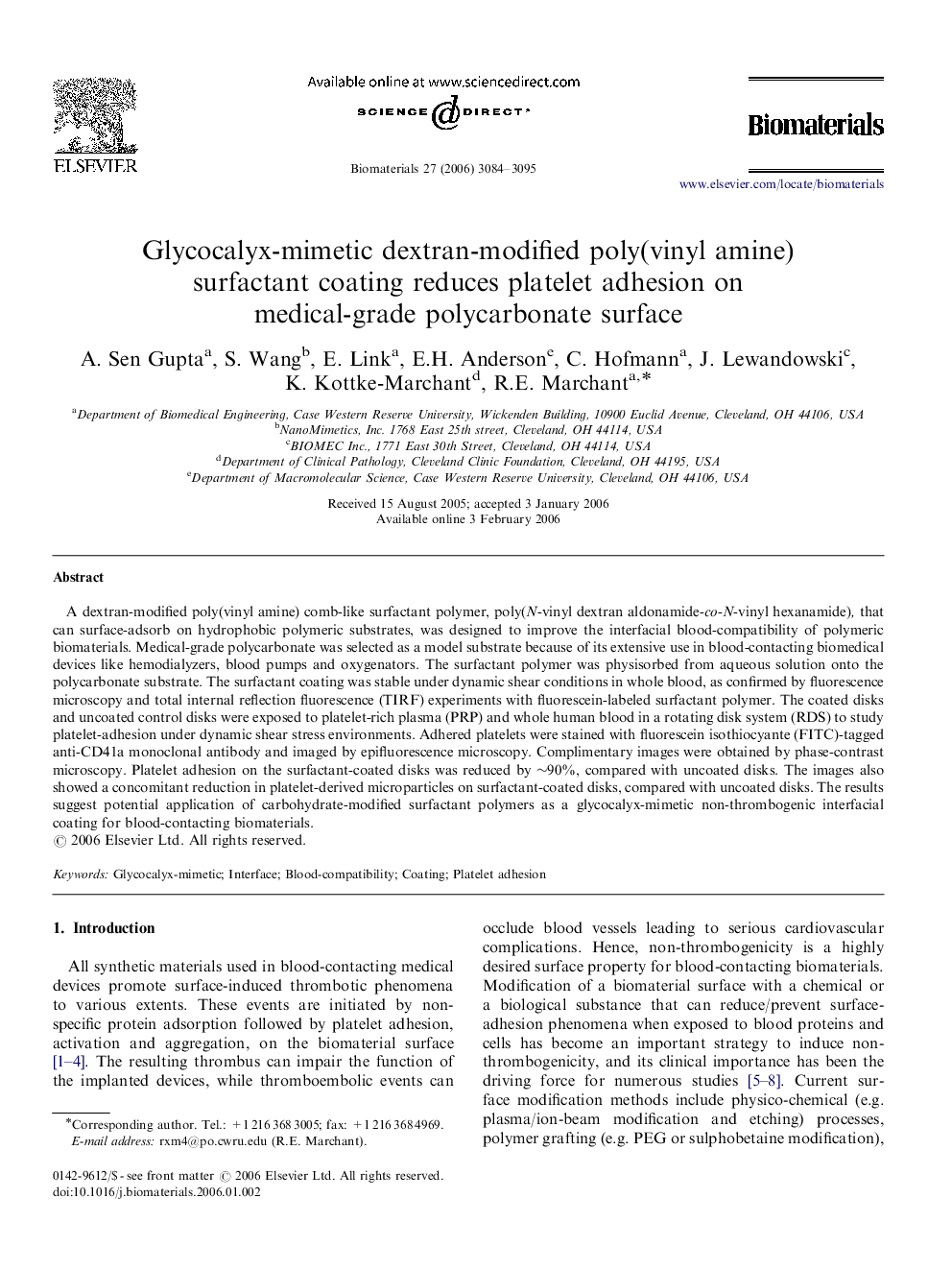| Article ID | Journal | Published Year | Pages | File Type |
|---|---|---|---|---|
| 11685 | Biomaterials | 2006 | 12 Pages |
A dextran-modified poly(vinyl amine) comb-like surfactant polymer, poly(N-vinyl dextran aldonamide-co-N-vinyl hexanamide), that can surface-adsorb on hydrophobic polymeric substrates, was designed to improve the interfacial blood-compatibility of polymeric biomaterials. Medical-grade polycarbonate was selected as a model substrate because of its extensive use in blood-contacting biomedical devices like hemodialyzers, blood pumps and oxygenators. The surfactant polymer was physisorbed from aqueous solution onto the polycarbonate substrate. The surfactant coating was stable under dynamic shear conditions in whole blood, as confirmed by fluorescence microscopy and total internal reflection fluorescence (TIRF) experiments with fluorescein-labeled surfactant polymer. The coated disks and uncoated control disks were exposed to platelet-rich plasma (PRP) and whole human blood in a rotating disk system (RDS) to study platelet-adhesion under dynamic shear stress environments. Adhered platelets were stained with fluorescein isothiocyante (FITC)-tagged anti-CD41a monoclonal antibody and imaged by epifluorescence microscopy. Complimentary images were obtained by phase-contrast microscopy. Platelet adhesion on the surfactant-coated disks was reduced by ∼90%, compared with uncoated disks. The images also showed a concomitant reduction in platelet-derived microparticles on surfactant-coated disks, compared with uncoated disks. The results suggest potential application of carbohydrate-modified surfactant polymers as a glycocalyx-mimetic non-thrombogenic interfacial coating for blood-contacting biomaterials.
